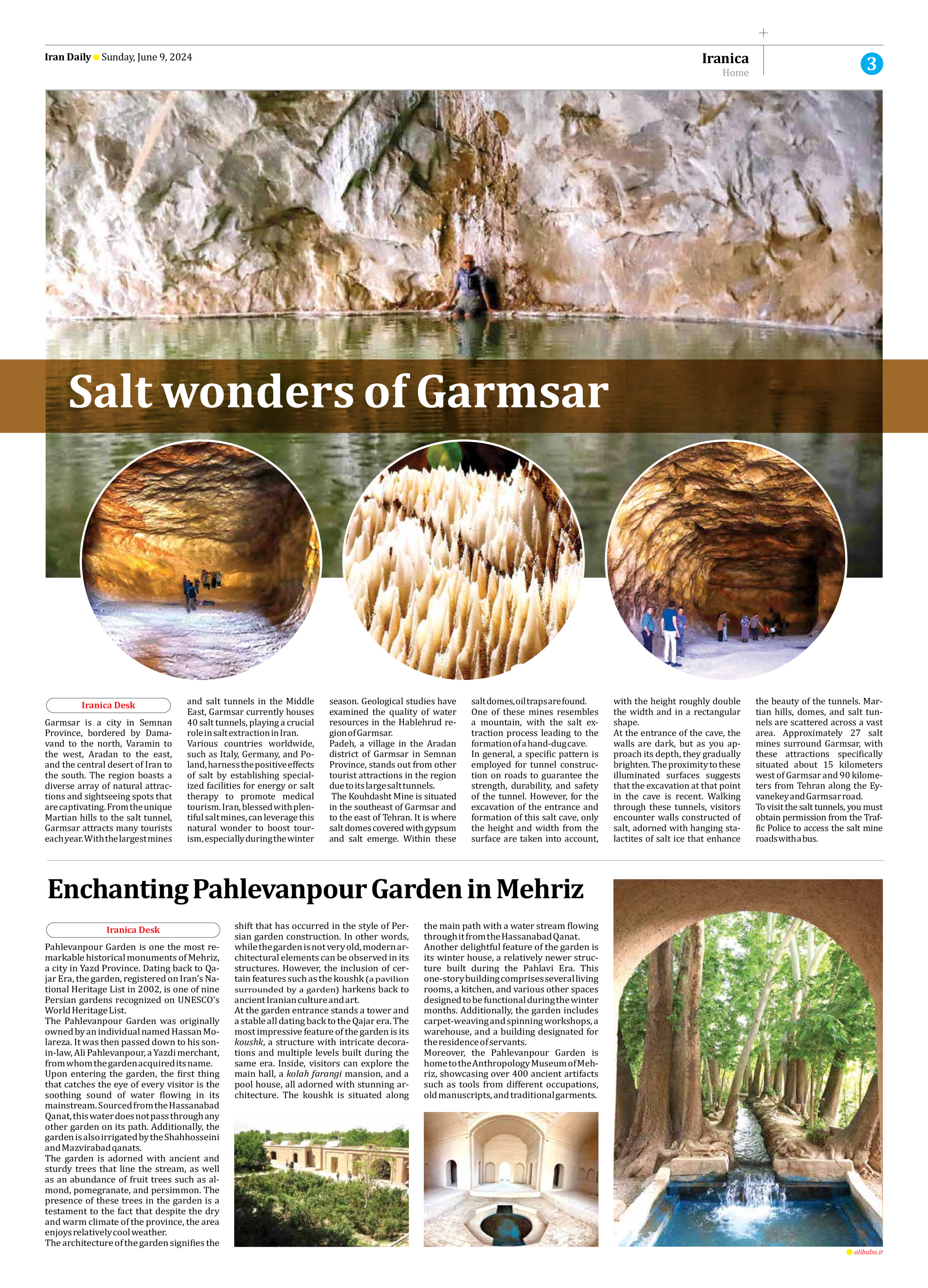
Enchanting Pahlevanpour Garden in Mehriz
Pahlevanpour Garden is one the most remarkable historical monuments of Mehriz, a city in Yazd Province. Dating back to Qajar Era, the garden, registered on Iran’s National Heritage List in 2002, is one of nine Persian gardens recognized on UNESCO’s World Heritage List.
The Pahlevanpour Garden was originally owned by an individual named Hassan Molareza. It was then passed down to his son-in-law, Ali Pahlevanpour, a Yazdi merchant, from whom the garden acquired its name.
Upon entering the garden, the first thing that catches the eye of every visitor is the soothing sound of water flowing in its mainstream. Sourced from the Hassanabad Qanat, this water does not pass through any other garden on its path. Additionally, the garden is also irrigated by the Shahhosseini and Mazvirabad qanats.
The garden is adorned with ancient and sturdy trees that line the stream, as well as an abundance of fruit trees such as almond, pomegranate, and persimmon. The presence of these trees in the garden is a testament to the fact that despite the dry and warm climate of the province, the area enjoys relatively cool weather.
The architecture of the garden signifies the shift that has occurred in the style of Persian garden construction. In other words, while the garden is not very old, modern architectural elements can be observed in its structures. However, the inclusion of certain features such as the koushk (a pavilion surrounded by a garden) harkens back to ancient Iranian culture and art.
At the garden entrance stands a tower and a stable all dating back to the Qajar era. The most impressive feature of the garden is its koushk, a structure with intricate decorations and multiple levels built during the same era. Inside, visitors can explore the main hall, a kolah farangi mansion, and a pool house, all adorned with stunning architecture. The koushk is situated along the main path with a water stream flowing through it from the Hassanabad Qanat.
Another delightful feature of the garden is its winter house, a relatively newer structure built during the Pahlavi Era. This one-story building comprises several living rooms, a kitchen, and various other spaces designed to be functional during the winter months. Additionally, the garden includes carpet-weaving and spinning workshops, a warehouse, and a building designated for the residence of servants.
Moreover, the Pahlevanpour Garden is home to the Anthropology Museum of Mehriz, showcasing over 400 ancient artifacts such as tools from different occupations, old manuscripts, and traditional garments.







